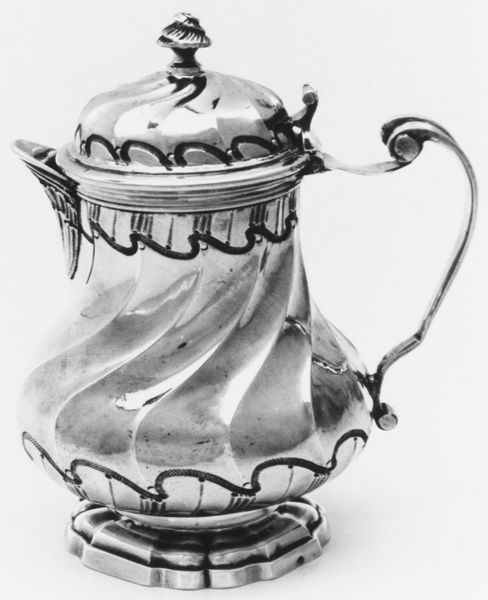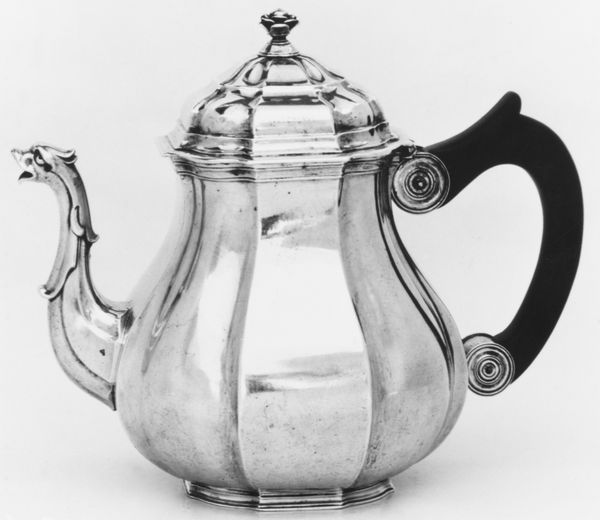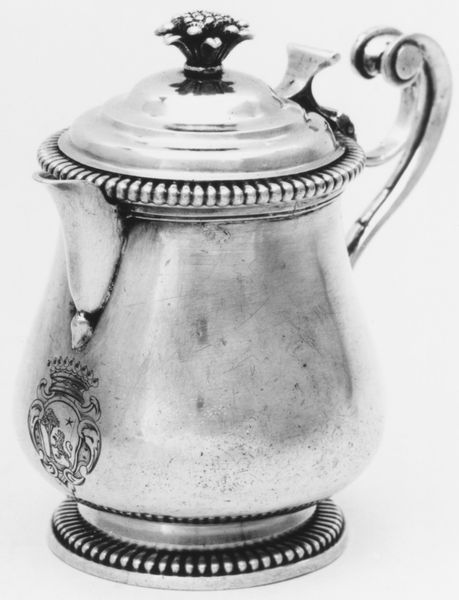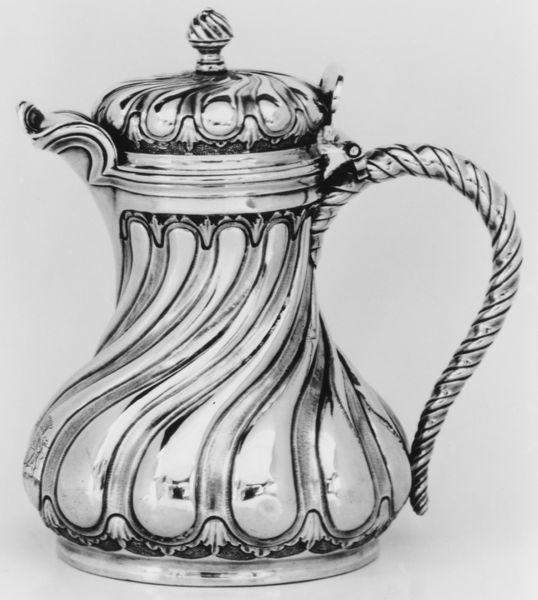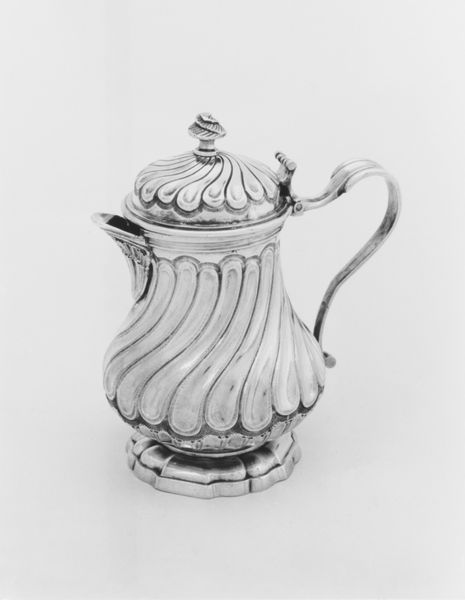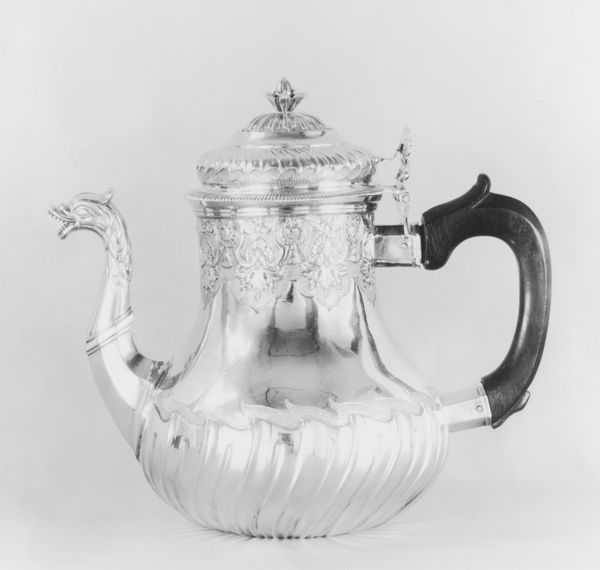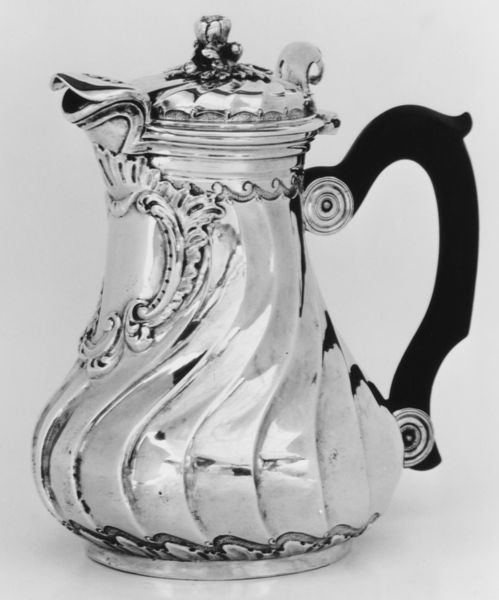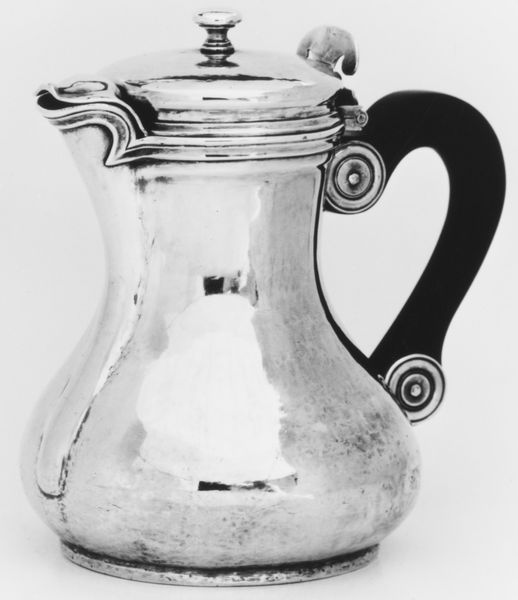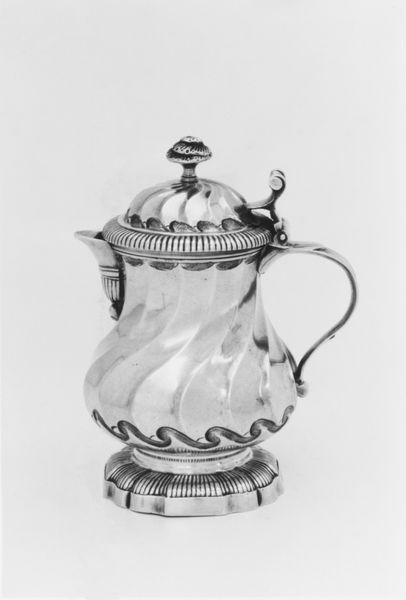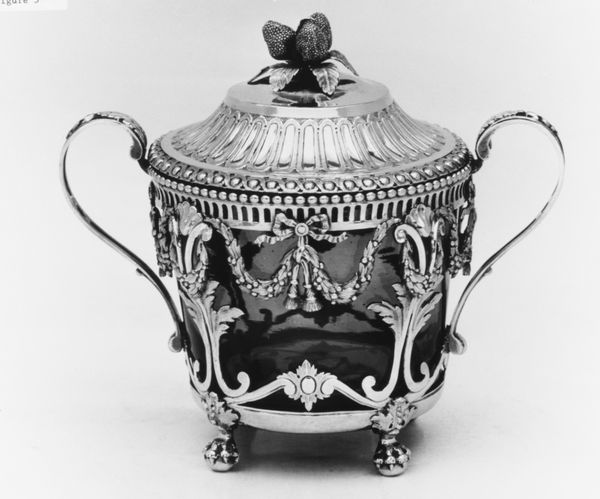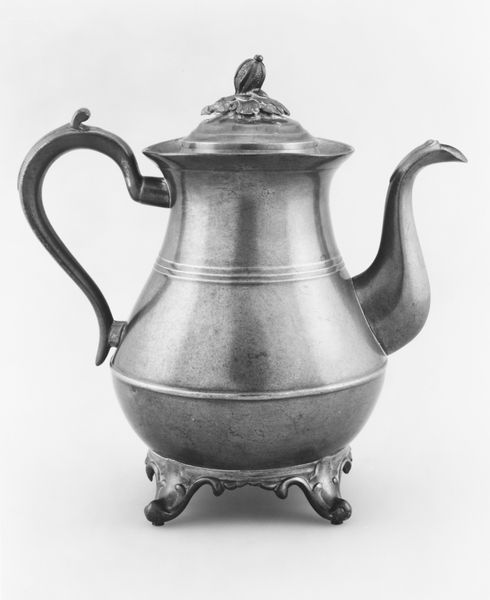
silver, metal, sculpture
#
silver
#
metal
#
sculpture
#
decorative-art
#
rococo
Dimensions: Height: 4 3/8 in. (11.1 cm)
Copyright: Public Domain
Curator: We're looking at a delightful silver mustard pot, crafted by Ennemond Ruynat sometime between 1753 and 1754. It's a Rococo piece, currently held at the Metropolitan Museum of Art. Editor: The immediate impression is one of luxury, a kind of contained opulence. The reflective surface and ornate detailing are so tactile. Curator: It's really the technique that strikes me. Silverwork like this demanded immense skill, a real command of the material. Think of the labour hours to chase and emboss these swirling flutes. The pot speaks to the hierarchical world of guilds and apprenticeships. Who was consuming mustard from such a vessel and what social performances was it a part of? Editor: The swirling form evokes the dynamics of growth and containment – very evocative of rococo themes. I can almost feel the pulse and surge of courtly life, its playful drama, echoed in this object. I find the details speak subtly about societal power structures. The teardrop embellishments along the upper rim look almost like inverted hearts, or tears held upside down. I would be really interested to explore what meanings a French nobleman might associate with that decorative device. Curator: Absolutely. It points to how objects weren't just functional but participated actively in constructing social identities. We see in that delicate finial, as well, a sort of excessive decoration typical of the period. It indicates consumption for display rather than merely utility, reflecting values attached to luxury and status. Editor: What’s fascinating to me is the way form becomes content. That repeated teardrop image seems an effort at masking deep human sentiments. This little pot, far from just a utilitarian container, becomes a vessel brimming with social and emotional implications. The object becomes a container for unspoken feelings, doesn’t it? Curator: I agree, in its essence, it shows how decorative arts like this embody labour and cultural meanings, demonstrating its integral position within broader social structures. Editor: For me, pondering these historical symbols is really about the relationship between design and human psychology across time. I wonder about its impact and significance to its original owner, beyond wealth. Curator: Looking closely really underlines the convergence of production and consumption; the making of such a thing is intertwined with social meanings of its consumption. Editor: Indeed; thanks, these are such good points to consider about the art of Ruynat, hopefully giving everyone food for thought!
Comments
No comments
Be the first to comment and join the conversation on the ultimate creative platform.
